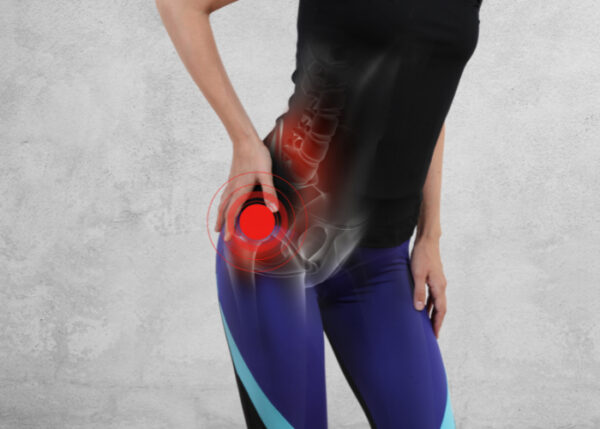External Snapping Hip Syndrome (Snapping ITB) Specialist

Are you experiencing external snapping in the hip either with or without pain? Does pain, inflammation and snapping tend to worsen with activity, but subsides when the same activity is stopped for a period of time? If so you may have Snapping Hip Syndrome. Snapping hip syndrome specialist, Dr. Jeff Padalecki provides diagnosis and both surgical and nonsurgical treatment options for patients in Austin who are experiencing snapping hip symptons. Contact Dr. Padalecki’s team today!
What is External Snapping Hip Syndrome (Snapping ITB)?
Snapping hip syndrome, or Snapping ITB, is a hip condition that is characterized by an audible “snap” or “click” that originates near the outside of the hip during rotational movements of the hip. External snapping hip syndrome is associated with the iliotibial band (ITB), which is the wide, thick tendon that runs along the outside of the hip joint and the outer thigh area. It also glides over the greater trochanter, which is located at the top of the femur near the outside of the hip. Austin, Round Rock, and Cedar Park, Texas communities residents who are experiencing a “snapping” or “clicking” sensation during hip rotation are encouraged to contact the office of Dr. Jeff Padalecki, hip specialist, for a detailed physical examination and treatment plan.
What Causes Snapping ITB or Snapping Hip?
Vigorous activity and repetitive motions can lead to snapping ITB in a patient who is predisposed because of the shape of their hip. When the ITB becomes tight, it limits flexibility of the hip rotators and rubs over a bony structure outside of the hip joint, creating the signature snapping sound and in some cases, extreme pain and inflammation.
What are the Symptoms of External Snapping Hip Syndrome?
Snapping hip syndrome may be painful or painless. While some athletes may seek attention for a painless audible snap, most do not seek medical attention unless the snapping hip is painful and prohibits the patient from participating in selected activities. Some patients may describe a feeling as if their hip is dislocating, but snapping hip syndrome by itself is not associated with hip instability. Pain, inflammation and snapping tend to worsen with activity, but do subside when the same activity is stopped for a period of time.
How is External Snapping Hip Syndrome Diagnosed?
Dr. Padalecki will perform a thorough physical exam placing the patient in various positions to determine alignment, pain level, and flexibility associated with snapping hip syndrome. He will also order an X-ray or in some cases an MRI to rule out any other underlying conditions such as loose bodies or impingement.

How is External Snapping Hip Syndrome Treated?
Non-Surgical
Snapping hip syndrome often heals on its own, but can only do so if the patient gets appropriate rest of the affected area. Exercises that aggravate the ITB tendon should be avoided if possible and the patient should allow for appropriate rest periods in between activities. Other treatments such as anti-inflammatory medication, massage therapy, and thorough stretching aid in recovery efforts. Recovery time can take as few as 4-6 weeks for less severe cases and up to several months for more chronic injuries.
Surgical
Surgery is often performed in patients with snapping hip syndrome if there is an associated condition, such as FAI, loose bodies, or damaged cartilage. Dr. Padalecki will typically utilize an arthroscopic procedure depending on the type of associated injury/condition and the severity. This will be discussed on a case-by-case basis with the patient.
What Occurs After Surgery for Snapping Hip?
Surgical patients will be prescribed a physical therapy and rehabilitation program to establish normal range of motion and strength in the hip, allowing the patient to resume normal activities.
For more information on external snapping hip syndrome (snapping ITB), or for additional resources on common hip injuries among athletes, please contact the office of Dr. Jeff Padalecki, orthopedic hip specialist in Austin, Texas.